Puli Township, Nantou
Chung Tai Chan Monastery
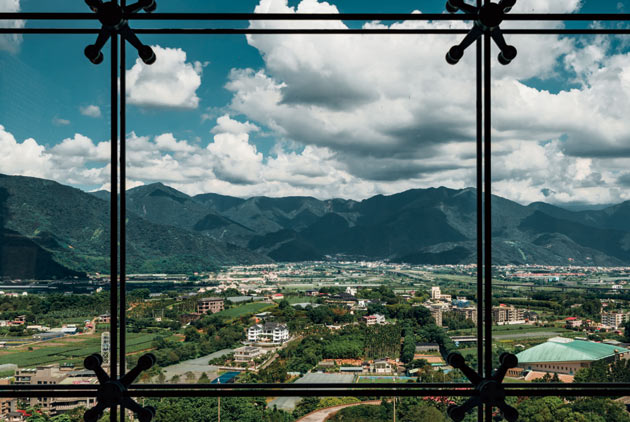
Source:Chen Chien-hao
The magnificent stature of the Chung Tai Chan Monastery is a hard one to miss when passing through Puli Township, Nantou. Even its side profile mimics the outline of a praying monk. Its outward appearance appears stylish while still retaining the virtues and wisdom of Buddhism teachings and everyday life. Upon closer approach, one can feel its calming effects and find power deeply rooted in its tranquility.
Views
Chung Tai Chan Monastery
By Kao Chia LingSponsored Content
Behind All the Glitter & Gold: Rooted Power
In his early years, Grand Master Wei Chueh, founder of Chung Tai Chan Monastery, first built Ling Quan Temple in Wanli District, New Taipei City. Later, due to the increasing number of disciples and lack of space, he chose Puli Township, Nantou, as the site of the future monastery. While drawing up the design and blueprints, however, architect Lee Chu-Yuan had just one simple problem: He had never designed a Buddhist temple before.
To build a Chen monastery that fulfilled modern-day needs, the old monk and Lee Chu-Yuan held endless discussions on the principles of Buddhism and how to transform them into daily practice. Together they visited many famous mountains, ancient temples, and observed religious works of ancient civilizations such as the pyramids of Egypt. After crunching, incorporating, and revising over 20 designs in total, a structure illustrating the spirit of Buddhism from a modern global perspective was born. And in 2001, after three years of planning, seven years of construction, and ten years of honing their sword, this extraordinary Buddhist temple was finally bestowed to the world.
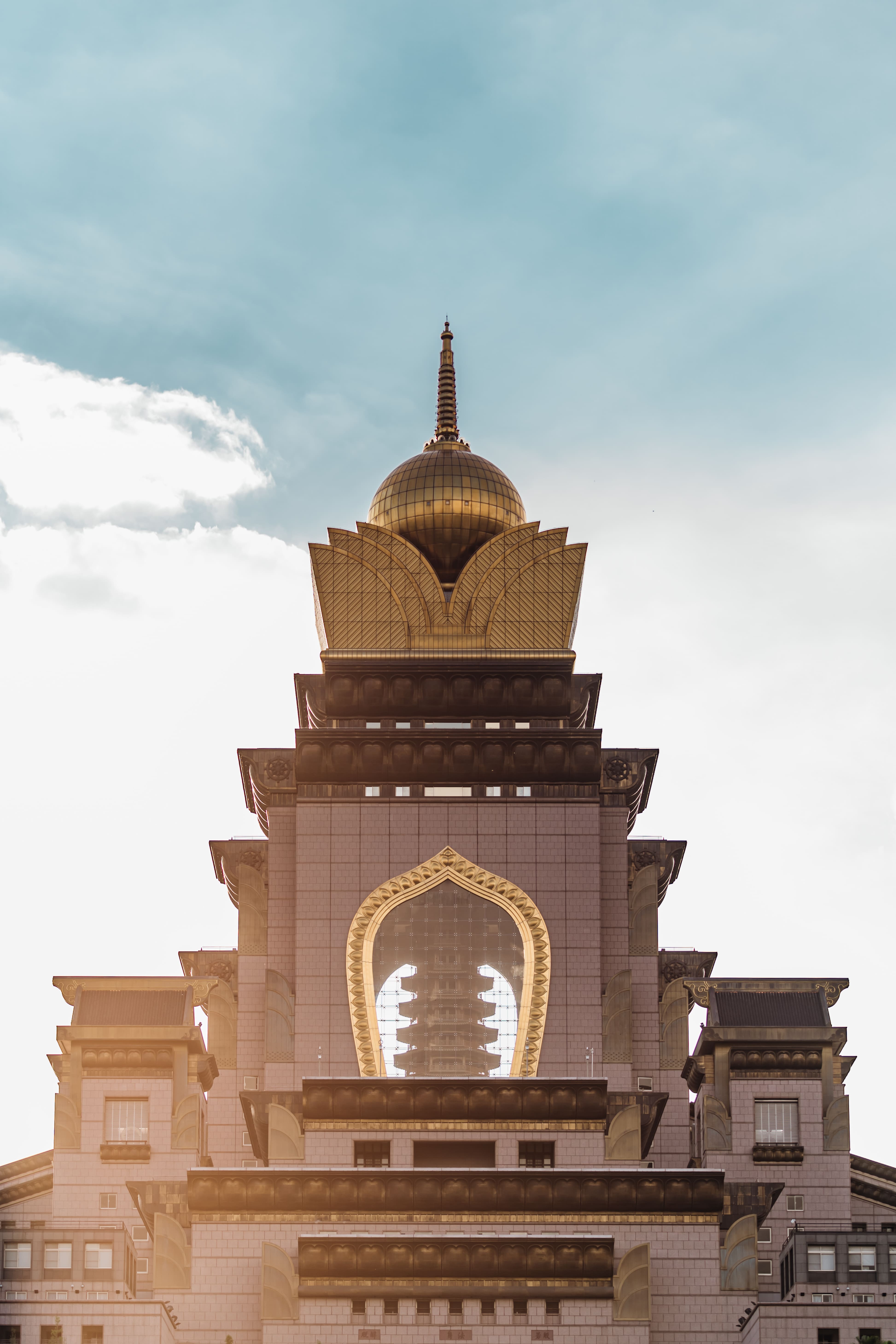
Stylish on the Outside, Simple on the Inside
The layout of many Buddhist temples seen today have mostly been passed down from the Tang and Song dynasties. However, the configuration at Chung Tai Chan Monastery is quite different. For example, most temples have only one main hall, but Chung Tai Chan Monastery instead has three which are set up on different floors and incorporated into one vertical space. The stupa, which is generally built outside the temple, is instead integrated inside the temple, making "the tower and temple as one." This is mainly due to the relatively narrow depth of the temple’s foundation. By using creative ingenuity, the architect was able to incorporate an unique three-dimensional and vertical layout which had never been seen or done before.

For visitors coming for the first time, Master Chien Yun, the Executive Director of Chung Tai Chan Monastery, suggests using a so-called "appearance approach,” in which one must first appreciate the overall appearance and feel of the temple before diving deeper into the understanding of Buddhism and its virtues and meaning.
"Many people see the golden roof above the building and consider it a splendid display of gold and jade. But, in fact, it symbolizes the complete attainment of wisdom and virtue. Every brick and tile used in the temple has a purpose. And if you can see the Dharma or Buddhist teachings behind each of these, you are a true expert in the field."
"The appearance of the monastery is very modern, but in fact, the practice and methods are quite traditional," Master Chien Yun says on breaking down the structure of the temple. "Our spirit is ancient, our form is traditional, and our mentality is modern." When the old monk began construction of the temple, they were just entering the twenty-first century. Facing the beginning of a new era, they were pulled in different directions with spreading Buddhism. Therefore, they decided to advocate the “Five Directions of Spreading Buddhism,” connecting academia, education, art, science, and daily life into the design of the monastery. Most importantly, one factor remained constant throughout the design: the Chinese word “life.”
The Seven-Limb Prayer: The Power of Serenity
The interpretation of Dharma must keep up with the times and beat to the pulse of modern society. Master Chien Yun further explains, "In the past, meditation was often looked upon as something hidden away in the mountains and jungles, locked behind closed doors without any visitors or guests. However, Chung Tai Chan Monastery is positioned as a modern Buddhist jungle, aiming at the individual’s inner learning, meditation, and stability, while at the same time founding schools, museums, and various courses. Ultimately, it is the concept of putting Buddhism into daily practice.” It may sound far-fetched, but for Lin Chi-Yu, whose work is intertwined with Chung Tai Chan Monastery, it has deep meaning.
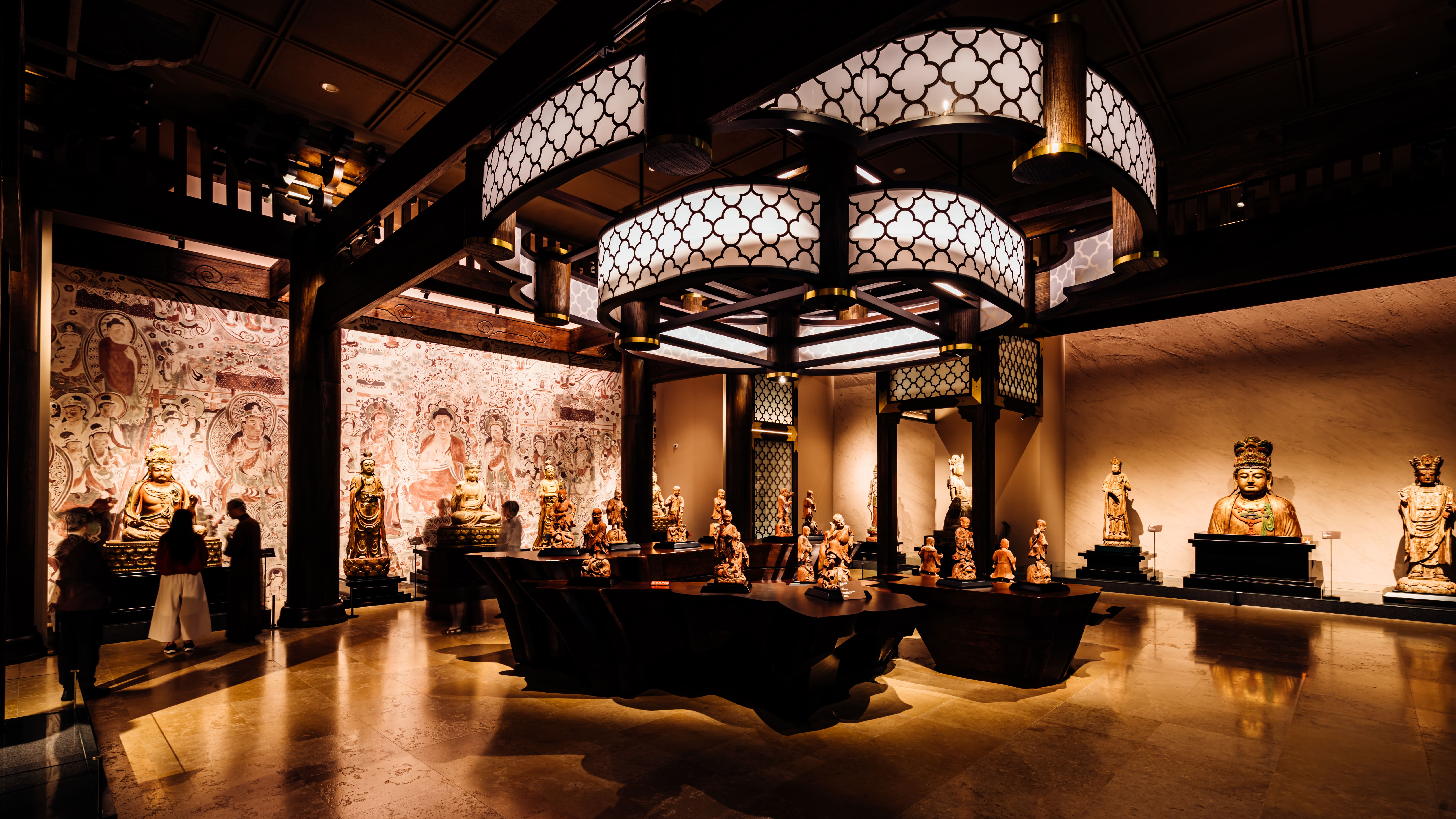
Ignoring her status as a practitioner herself, Lin Chi-Yu works as a director of the News and Administration Department for the Nantou County Government. At work, she often receives distinguished guests sent from the county government, and chooses to take them around Chung Tai Chan Monastery when introducing Nantou. “At first, I didn’t have any feeling towards Buddhism. However, every time I came here, I left feeling cleansed, so I decided to sign up for a meditation class. After seven or eight years, I found that my mind and my perspective had completely changed.” She vividly describes, "Although meditation takes seven days and you cannot talk to others, by meditating repeatedly and listening to the Grand Master's teachings, you can learn how to remove much of the noise and garbage in your mind. Feeling fully charged, you can then return home to your family and workplace as a brand-new self."
When asked about their favorite corner of the monastery, both Master Chien Yun and Lin Chi-Yu cried out loud unanimously: "The meditation hall!"
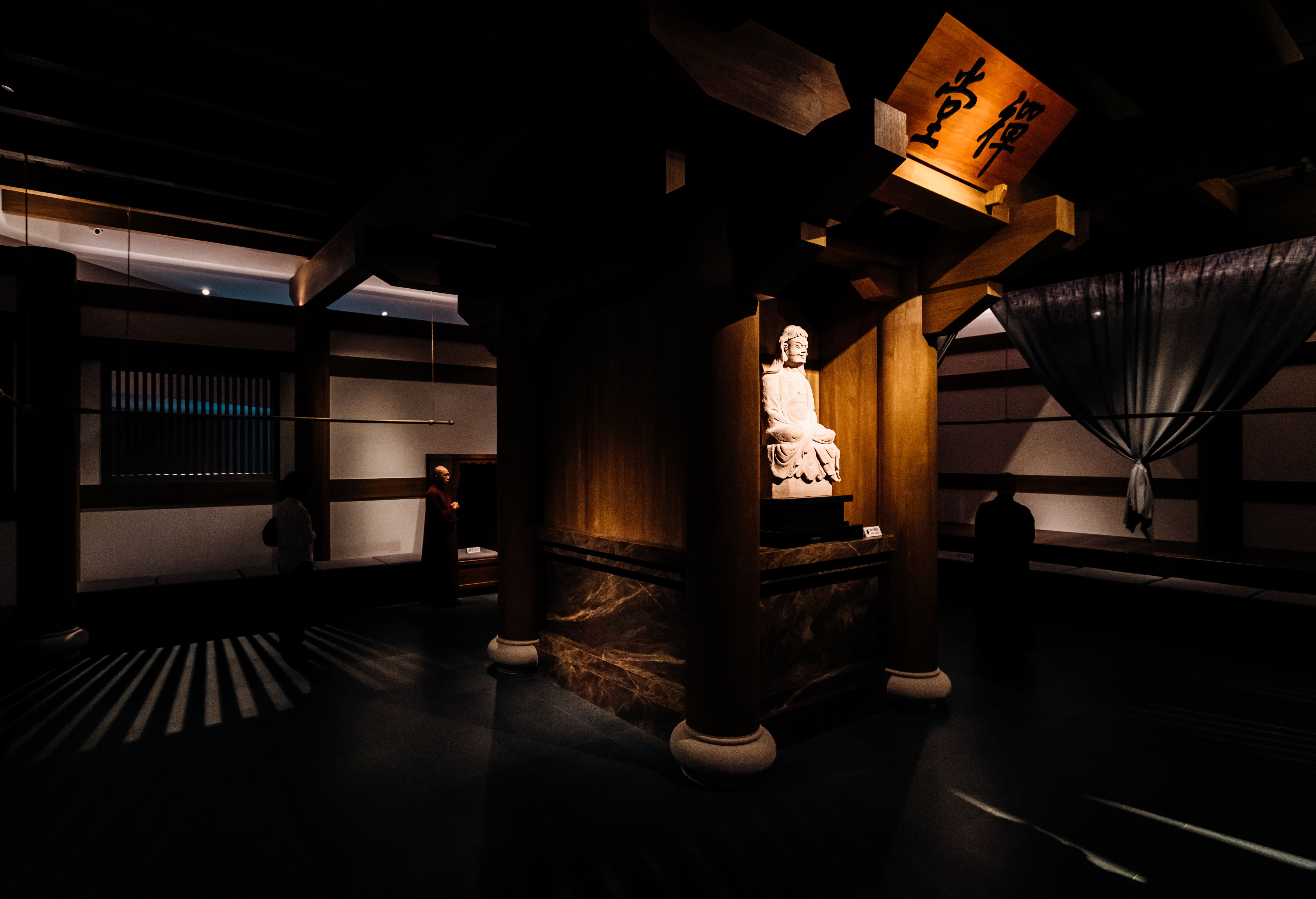
This is where the silence is deafening. The square-shaped meditation hall was built to accommodate hundreds of people. However, It is surprising that not so much as a peep is made when people recite the Seven-Limb Prayer in silence. “Utter silence is often the most powerful." Master Chien Yun chuckles.
The Seven Stages of Enlightenment takes time. Perhaps, from the moment one embarks on their journey, it is the shortest distance between the seeker and Buddha!
Take a Dip in Yuchi Township and Enjoy a Sip of the New World Black Tea
The Buddhist scripture says: "One flower, one world, one leaf, one Tathāgata." The same holds true for drinking tea as many stories can be told just through a single cup of tea. From traditional to innovative tea-picking and tea-making, "HOHOCHA," located in Yuchi Township, Nantou, is just that place.
Yuchi black tea is well-known far and wide. Since the early twentieth century, the Japanese introduced Indian Assam and other varieties of black tea into Yuchi Township, where it took root and gave birth to its famous sweet, mellow flavor. After the great earthquake of September 21, the local black tea industry was revitalized, which cemented Yuchi's reputation and also motivated younger generations to return to their hometown, including HOHOCHA brothers Wang Chao-Hsin and Wang Chao-Wei.
The first floor of the eye-catching wooden building is where the tea factory is located. Its bright, clean space can be seen through the glass windows. The eight major tea-making processes, such as withering, rolling, deblocking, fermentation, and drying, are showcased to visitors here just like the black tea classroom. “My hope is that people here will not only be able to walk around and enjoy the scenery but also learn more about black tea and bring tea to life." says Wang.

A variety of black tea experiences are offered here, allowing people of all ages to make their own tea flavors by kneading, mixing, and sealing tea by themselves. Tea-lovers can also try the tea tasting activity, led by a professional tea taster, to enjoy the wonderful taste of five Sun Moon Lake black teas such as Ruby, Honyun, Assam, Wild Tea, and Old Tea.
They also offer a variety of black tea dishes, the most popular of which is the tea egg. It takes four days to make and is repeatedly massaged and refrigerated. With just a single bite, the intoxicating aroma of Ruby tea permeates throughout the nasal cavity. The Italian gelato made of black tea and fruit is also irresistible, with its delicate yet dense taste drawing a pleasant surprise to one’s black tea journey.
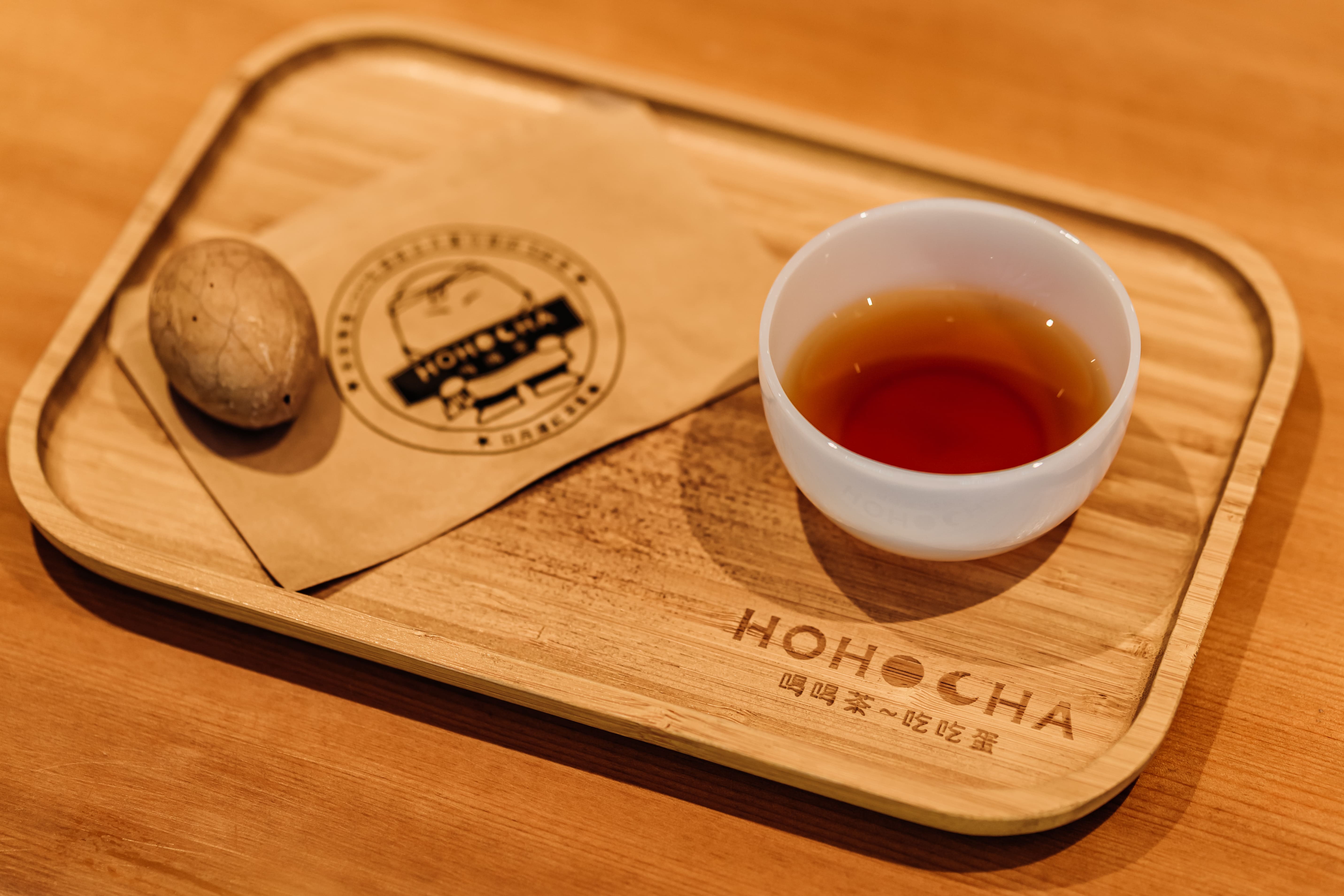
Getting There・Chung Tai Chan Monastery
Public transportation: From Taichung Railway Station or HSR Wuri Station, take the "Taiwan Travel – Sun Moon Lake Line C" to reach the Chung Tai Chan Monastery and Chung Tai World Museum.
Self-drive: Take National Highway No. 3, and connect to National Highway No. 6 via Wufeng System Interchange. Proceed in the direction of Wushe. After getting off at Puli Interchange, proceed in the direction of Guoxing, and follow the signs indicating “Chung Tai Chan Monastery.”
More Information
Chung Tai Chan Monastery
No. 2, Zhongtai Rd., Puli Township, Nantou County 545, Taiwan
049-2930215
Chung Tai World Museum
No. 8, Zhongtai Rd., Puli Township, Nantou County 545, Taiwan
049-2932999
Chung Tai World Museum・Wood Sculpture Gallery
No. 6, Zhongtai Rd., Puli Township, Nantou County 545, Taiwan
049-2932000
HOHOCHA
No. 443-36, Yuchi St., Yuchi Township, Nantou County 555, Taiwan
049-2895899






